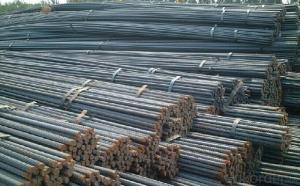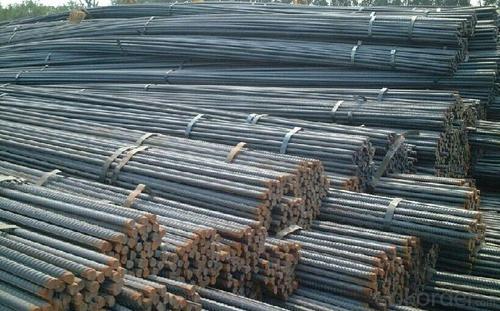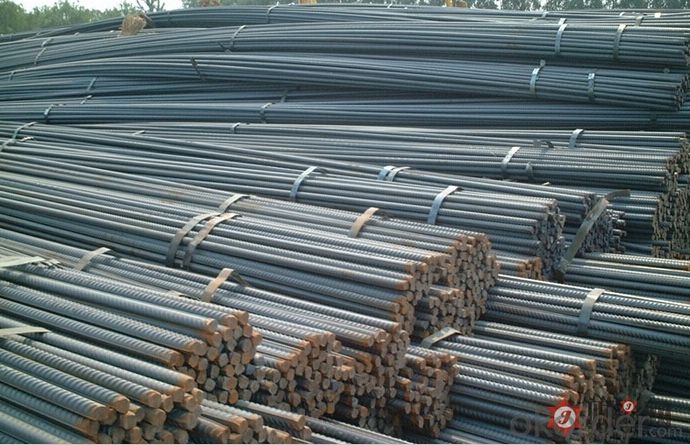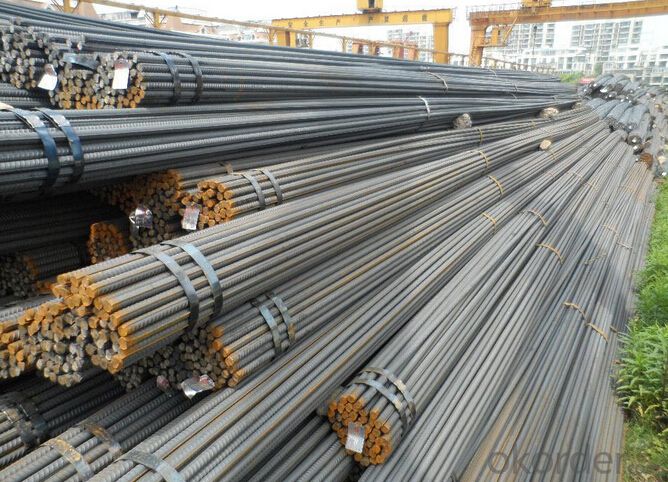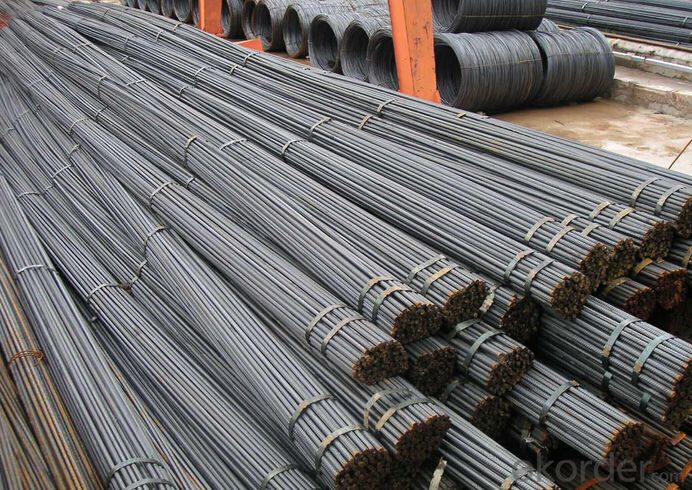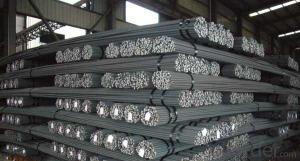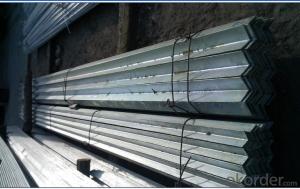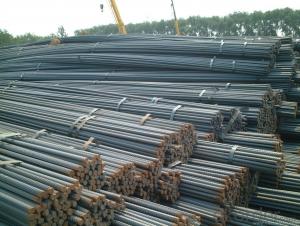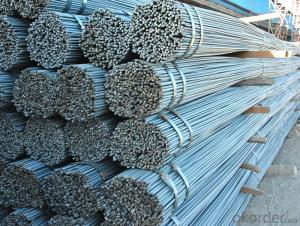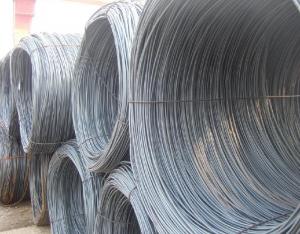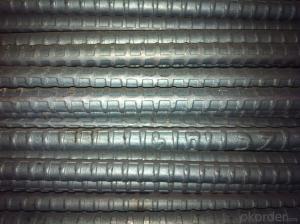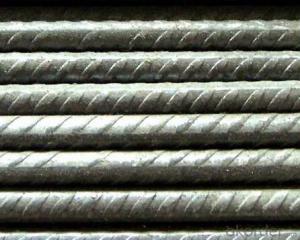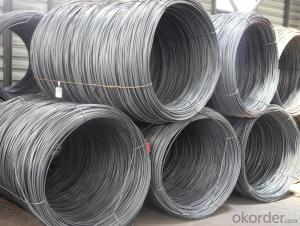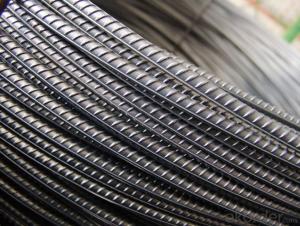Dia.12mm Alloy Steel Deformed Rebar in Coil
- Loading Port:
- Tianjin
- Payment Terms:
- TT OR LC
- Min Order Qty:
- 100 m.t.
- Supply Capability:
- 10000 m.t./month
OKorder Service Pledge
Quality Product, Order Online Tracking, Timely Delivery
OKorder Financial Service
Credit Rating, Credit Services, Credit Purchasing
You Might Also Like
Specification
Standard:
EN,API,DIN,BS,JIS,ASTM,AISI,GB
Technique:
Hot Rolled,Spring,EFW,Extruded,Saw,Forged,ERW,Cold Drawn,Cold Rolled
Shape:
Square,C Channel,Hexagonal,Round,Rectangular,Oval,LTZ,U Channel
Surface Treatment:
Galvanized,Coated,Copper Coated,Color Coated,Oiled,Dry,Polished,Bright,Black,PVDF Coated,Chromed Passivation
Steel Grade:
Q195,Q215,Q235,Q215B,Q235B,RHB335,HRB400,200 Series,300 Series,400 Series,600 Series,SS400-SS490,10#,20#,A53(A,B)
Certification:
ISO,SGS,BV,IBR,RoHS,CE,API,BSI,UL
Thickness:
8-32
Length:
12
Net Weight:
10
Dia.12mm Alloy Steel Deformed Rebar in Coil
Details of the Dia.12mm Alloy Steel Deformed Rebar in Coil
| Standard & Grade: | GB1499-98 : HRB335,HRB400,HRB500 |
| BS4449-1997 : GR460,GR500 | |
| CAN/CSA-G30.18-M92 : 400W | |
| ASTM A615 : Gr.40, Gr.60 | |
| Diameter: | 6mm;8mm;10mm;12mm;14mm;16mm;18mm;20mm;22mm;25mm;28mm;30mm;32mm;35mm;40mm |
| Length: | 6m,9m,12m |
| Packing: | Bundle packing |
| Origin: | China |
| Application: | Construction,Road,Machinery processing,Welding fields. |
| Delivery time: | 10-25 days |
| Shipment: | By bulk vessel or Container |
| Documents: | Mill Test Certificate,Commercial Invoice,Packing List,Certificate of Origin |
Company Introduction of the Dia.12mm Alloy Steel Deformed Rebar in Coil
CNBM International Corporation is the most import and export platform of CNBM group(China National Building Material Group Corporation) ,which is a state-owned enterprise, ranked in 270th of Fortune Global 500 in 2015.
With its advantages, CNBM International are mainly concentrate on Cement, Glass, Iron and Steel, Ceramics industries and devotes herself for supplying high quality series of refractories as well as technical consultancies and logistics solution.

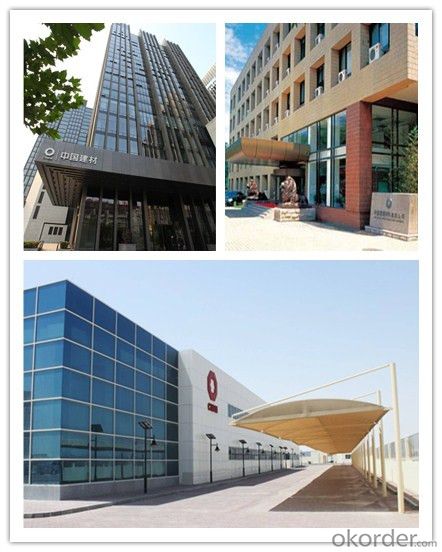
Packaging & Delivery of the Dia.12mm Alloy Steel Deformed Rebar in Coil
| Packaging Detail | Sea worthy packing /as per customer's packing instruction |
| Delivery Detail | 15 ~ 40 days after receiving the deposit |
FAQ
| Are you a trading company or manufacturer? | Manufacturer |
| What’s the MOQ? | 1000m2 |
| What’s your delivery time? | 15-20 days after downpayment received |
| Do you Accept OEM service? | Yes |
| what’s your delivery terms? | FOB/CFR/CIF |
| What's the Payment Terms? | 30% as deposit,70% before shipment by T/T |
| Western Union acceptable for small amount. | |
| L/C acceptable for large amount. | |
| Scrow ,Paybal,Alipay are also ok | |
| Why choose us? | Chose happens because of quality, then price, We can give you both. Additionally, we can also offer professional products inquiry, products knowledge train (for agents), smooth goods delivery, excellent customer solution proposals. |
| What's your available port of Shipment? | Main Port, China |
| What’s your featured services? | Our service formula: good quality+ good price+ good service=customer's trust |
| Where are your Market? | Covering more than 160 countries in the world |
- Q: How do steel rebars help in preventing cracks in concrete?
- The reinforcement of steel rebars is essential for preventing cracks in concrete and adding strength to the structure. Concrete is strong in compression but weak in tension, meaning it can withstand forces that push or compress it, but it is prone to cracking under pulling or bending forces. To counteract this weakness, steel rebars are embedded within the concrete. They act as a framework, distributing tensile forces evenly throughout the material and preventing the formation and spread of cracks. Additionally, rebars reinforce the structure, increasing its resistance to bending, shearing, and external forces. Furthermore, steel rebars enhance the overall structural integrity of the concrete, thus preventing cracks. During the drying and curing process, concrete tends to shrink and crack. However, with the presence of rebars, the tensile forces caused by shrinkage are absorbed by the steel, reducing or eliminating the formation of cracks. Moreover, steel rebars provide resistance against temperature changes and external loads, which also helps prevent cracks in concrete. They control the expansion and contraction of the material due to temperature fluctuations, minimizing the risk of cracking. Additionally, rebars reinforce the concrete against heavy loads, such as those from traffic or seismic activity, ensuring the structure remains intact and free from cracks. In conclusion, steel rebars are crucial in preventing cracks in concrete by reinforcing the material, distributing forces, absorbing tensile stresses, and enhancing structural integrity. Their presence significantly improves the durability and longevity of concrete structures, making them more resistant to cracking and ensuring their stability over time.
- Q: Are there any limitations on the use of steel rebars in flexural members?
- Yes, there are some limitations on the use of steel rebars in flexural members. These limitations include factors such as the size and shape of the rebars, the spacing between them, and the quality of the steel used. Additionally, the design and construction codes and standards set specific guidelines for the use of rebars in flexural members to ensure structural integrity and safety.
- Q: Are there any specific guidelines for storing steel rebars on-site?
- Yes, there are specific guidelines for storing steel rebars on-site. These guidelines typically include keeping the rebars off the ground using racks or pallets, ensuring proper alignment and support to prevent bending or warping, protecting them from moisture and corrosion by covering with waterproof material, and organizing them in a way that allows easy access and identification. It is also important to follow any manufacturer recommendations and local building codes for safe storage of steel rebars.
- Q: How do steel rebars contribute to the overall structural performance of a building?
- Steel rebars play a crucial role in enhancing the overall structural performance of a building. These reinforced steel bars are primarily used in concrete construction and provide strength and stability to the structure. Firstly, rebars reinforce the concrete by increasing its tensile strength. Concrete is highly resistant to compression forces, but it is weak when it comes to tension. By adding steel rebars, which have excellent tensile strength, to the concrete, the resulting composite material becomes much stronger and more resistant to bending or cracking under pressure. Moreover, rebars improve the durability and longevity of the building. Concrete structures are subjected to various forces such as wind, earthquakes, and heavy loads. Steel rebars act as a reinforcement network, distributing these forces throughout the concrete and preventing localized damage. This reinforcement helps to minimize the risk of structural failure, ensuring the building can withstand the test of time and environmental conditions. In addition, rebars contribute to the overall stability of the structure. By reinforcing concrete columns, beams, and slabs, rebars enhance their load-bearing capacity. This enables the building to support heavier loads without excessive deflection or collapse. The increased stability provided by the rebars also allows for more flexible and creative architectural designs, as they provide the necessary structural support for complex and unique building shapes. Furthermore, steel rebars are essential in seismic zones where earthquakes are common. The ductility and flexibility of steel allow it to absorb and dissipate the energy generated during an earthquake. This prevents the building from undergoing severe damage and helps it to retain its structural integrity, minimizing the risk to occupants. Overall, steel rebars significantly contribute to the overall structural performance of a building by enhancing its strength, durability, stability, and resistance to various forces. Their use ensures that the structure remains safe, long-lasting, and capable of withstanding the demands placed upon it, making them an indispensable component in modern construction.
- Q: How do steel rebars resist shear forces in concrete structures?
- Shear forces in concrete structures are counteracted and reinforced by steel rebars. These rebars play a crucial role in enhancing the concrete's strength and stability. They are strategically placed in areas where high shear forces are expected, such as beams, columns, and slabs. By forming a crisscross pattern, the rebars create a grid-like structure within the concrete. When shear forces act on the concrete, the rebars resist cracking and separation by transferring the load across the cracks. Acting as tension reinforcement, the rebars provide extra strength, preventing the concrete from failing. Additionally, they distribute the shear forces evenly, reducing stress concentration and increasing the overall structural integrity. The bond between the steel rebars and the concrete is vital for their effective resistance against shear forces. The rebars are designed with ridges or deformations on their surface to improve the bond strength. This bond ensures that the rebars and the concrete work together as a unified unit, facilitating the transfer of shear forces from the concrete to the rebars. To summarize, steel rebars reinforce concrete structures by strengthening and distributing shear forces more effectively. They prevent cracking and failure, enhance the structural integrity, and ensure overall stability.
- Q: Do steel rebars have any specific markings or codes?
- Yes, steel rebars have specific markings and codes that indicate their properties and characteristics. These markings or codes are typically engraved or painted on the surface of the rebar and provide information about the manufacturer, grade, size, and type of the rebar. They are essential for identifying and ensuring the correct usage of rebars in construction projects.
- Q: Can steel rebars be used in stadium and sports arena construction?
- Yes, steel rebars can be used in stadium and sports arena construction. Steel rebars provide strength and durability to the structures, making them suitable for supporting the heavy loads and ensuring the overall integrity of the infrastructure.
- Q: What are the guidelines for repairing damaged steel rebars in a structure?
- The guidelines for repairing damaged steel rebars in a structure typically involve a few key steps. Firstly, it is important to assess the extent of the damage and determine if the rebars can be repaired or need to be replaced entirely. If repair is feasible, the damaged portion of the rebar should be carefully cut out, ensuring that the surrounding concrete is not affected. The surface of the remaining rebar should then be prepared by removing any rust, scale, or contaminants. Next, an appropriate repair material, such as epoxy or a cementitious grout, should be applied to bond the repaired rebar with the existing structure. The repaired area should be properly cured and protected to ensure its long-term durability. It is crucial to follow industry standards and consult with structural engineers or professionals experienced in rebar repair to ensure the repair is done correctly and meets the necessary requirements for structural integrity.
- Q: Are there any limitations on the maximum length of steel rebars?
- Yes, there are limitations on the maximum length of steel rebars. The length of steel rebars is typically limited by transportation and handling constraints. Rebars are often manufactured in standard lengths that can be easily transported and manipulated on construction sites. However, longer lengths can be custom-made if required, but they may have practical limitations based on logistical factors.
- Q: Can steel rebars be used in underground construction?
- Yes, steel rebars can be used in underground construction. Steel rebars are commonly used in the construction of underground structures such as tunnels, foundations, and retaining walls due to their high strength and durability. They provide reinforcement and enhance the structural integrity of the underground construction, making it capable of withstanding various loads and pressures.
Send your message to us
Dia.12mm Alloy Steel Deformed Rebar in Coil
- Loading Port:
- Tianjin
- Payment Terms:
- TT OR LC
- Min Order Qty:
- 100 m.t.
- Supply Capability:
- 10000 m.t./month
OKorder Service Pledge
Quality Product, Order Online Tracking, Timely Delivery
OKorder Financial Service
Credit Rating, Credit Services, Credit Purchasing
Similar products
Hot products
Hot Searches
Related keywords
